

Lake Erie, Lake St. Clair
12. November 2005,
orbit: 19361
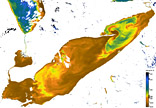
Concentration of total suspended matter
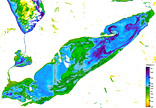
Quality measure of the inversion procedure (chi square)
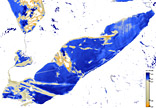
Aerosol optical thickness at 550nm
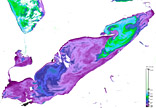
Depth where 90% of the light is absorbed at wavelength where this value is maximal
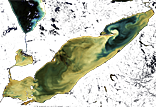
C2R RGB image
(bands 6-5-2)
Click on the small images above to get the full resolution image (appr. 5÷6MB)

